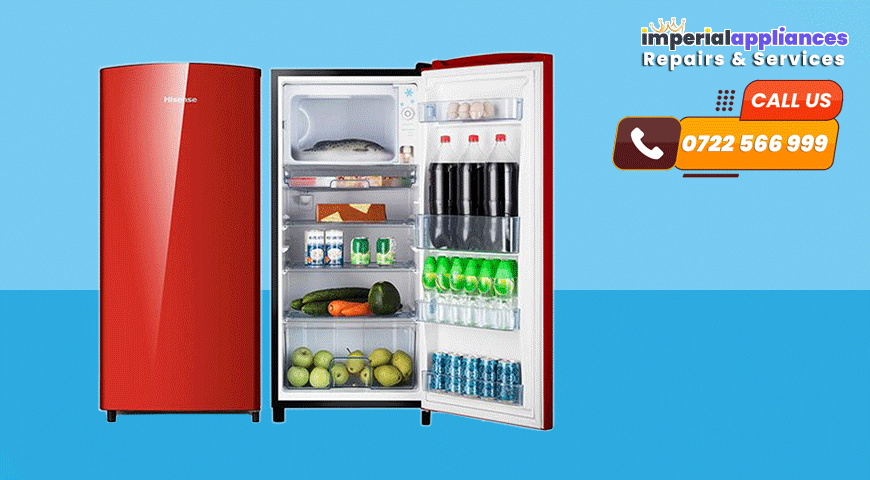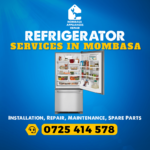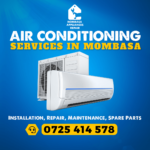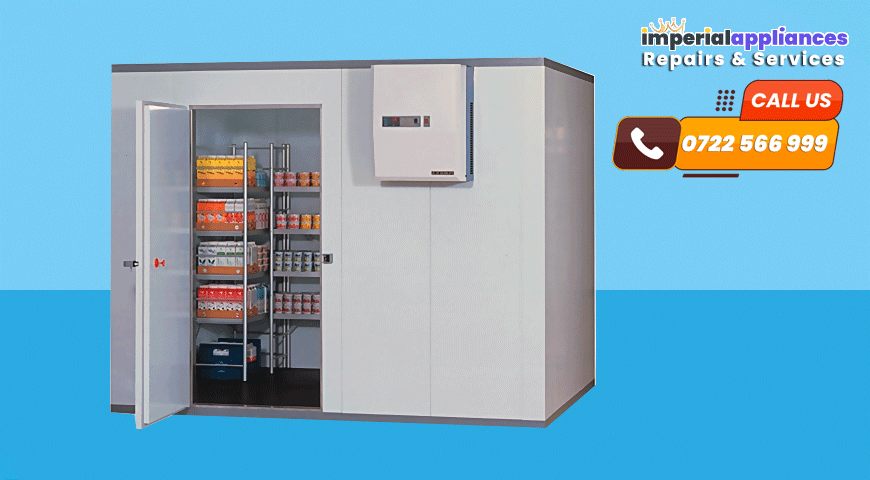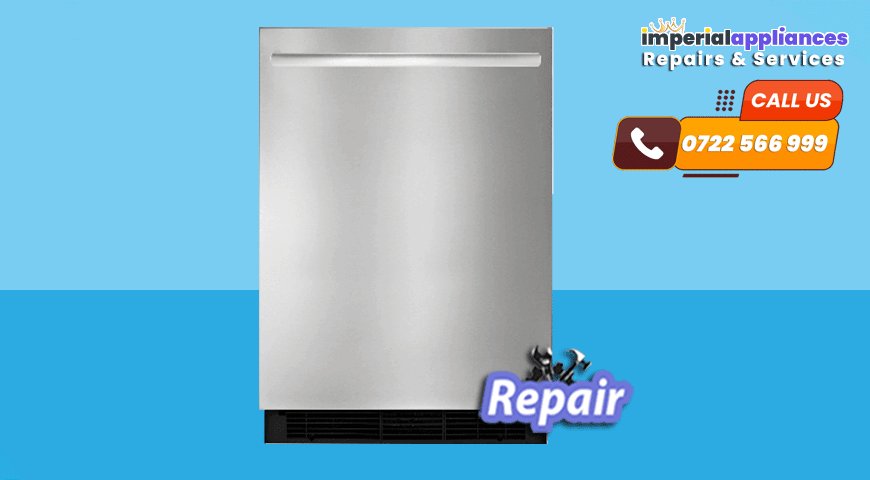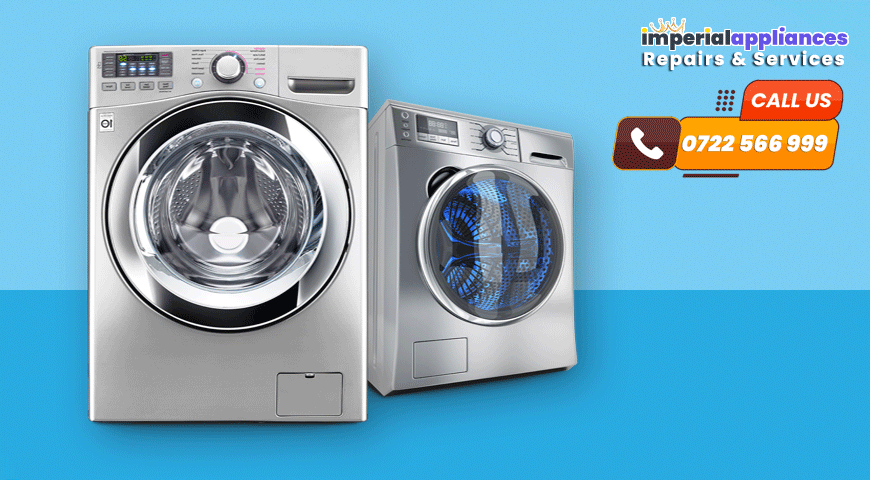Dishwasher Repair in Mombasa
Dishwasher Repair in Mombasa – The control panels on the latest dishwashers can look intimidating. They’re loaded with so many dials, push buttons, and other features that the machine looks too complex to repair. This is actually not the case.
With the exception of the control panel, dishwashers haven’t changed much in basic design over the last two decades. You can repair most dishwasher malfunctions yourself, and we’ll discuss tips for do-it-yourself service and maintenance in this article.
Dishwasher parts can be replaced as a unit, which is often easier and less expensive than having a professional service person make repairs. If you aren’t sure a part is still usable, remove it from the dishwasher and take it to a professional for testing. You can then decide whether to buy a new part or have the old one repaired on the basis of the repair estimate.
Dishwashers usually run on 115-volt or 120-volt power. The water they use comes directly from the water heater, and wastewater is drained into the sink’s drainpipe. The dishwasher is not connected to the cold-water supply.
For best dishwashing results, set the temperature control of the water heater to no less than 140 degrees Farenheit. Water cooler than this usually doesn’t get the dishes clean, unless your dishwasher is a newer model that preheats incoming water. The water shutoff for the dishwasher is typically located below the adjoining sink.
Caution: Because the dishwasher is connected to both the plumbing system and the electrical system, you must consider both systems when working on this appliance.
Before doing any work on the dishwasher, make sure the unit is unplugged or the power to the unit is turned off, and remove the fuse or trip the circuit breaker that controls the circuit at the main entrance panel or at a separate panel. Shut off the water supply to the dishwasher at the shutoff in the basement or crawl space under the kitchen.
Here are some operating checks you can make if the dishwasher does not work:
Step 1: Check to make sure it’s receiving power. If the unit plugs into a wall outlet, check the cord, the plug, and the outlet to make sure they’re functioning properly. Also check the switch that controls the outlet to make sure it’s turned on. Most built-in dishwashers are wired directly into a circuit.
Check the main entrance panel for a blown fuse or tripped circuit breaker, and restore the circuit. If your home is an older one, the dishwasher may be wired to a separate entrance panel; look for a blown fuse or breaker at this panel, and restore the circuit.
Step 2: If the circuit is receiving power, and the wall outlet is controlled by a switch, the switch may be faulty. Test the switch with a voltage tester.
Take off the switch cover plate and place one probe of the tester on one terminal and the other probe on the other terminal. If the tester bulb lights, the switch is functioning. If it doesn’t light, the switch is faulty. Replace the switch with a new one of the same type.
Step 3: Make sure the door is tightly closed and latched. The dishwasher will not operate until the latch is properly engaged. To check the latch, close and latch the door, holding the latch tightly in place. Then, still pressing the latch closed, turn the control knob to the ON position. If the dishwasher works, the latch is faulty and should be cleaned, tightened, or replaced.
Step 4: Make sure the water is turned on and the water temperature is high enough. A breakdown in the water heater could stop flow of water to the dishwasher. Test the hot water in the kitchen sink or bathroom. If you can draw hot water, the water heater may not be at fault.
Step 5: Make sure the controls on the control panel are properly set. The newer push-button controls can be very sensitive; make sure the buttons are firmly pressed into position.
If you’ve gone through these five checks without finding the solution, it’s time to dig deeper into the dishwasher.
Disassembling the Dishwasher
Access to the working parts of most dishwashers is through the front door of the unit. Many repairs can be made to the machine by simply opening the door and reaching into the various component parts, such as the sprayers, strainers, float switch, racks, and door latch.
To get to the control panel on the door, remove a series of retaining screws around the panel. These screws may be under molding trim strips, which usually snap onto the metal housing. Pry off the strips with a stiff-bladed putty knife or a screwdriver, or remove a setscrew that holds the molding. The control knobs are friction-fit on shafts or are held by small setscrews in the base of the knobs. In some dishwashers, the entire front door panel must be removed to gain access to the control components. This panel is held to the door by a series of retaining screws, usually found around the edge on the inside back of the door.
On many models, once the control panel is removed the door panel can be removed by unscrewing a series of fasteners holding the door panel in place. Sometimes these retaining screws are covered by trim moldings, which must be pried or slipped off. For access to the motor, pump, hoses, inlet valves, and other parts, remove the lower access panel. This can usually be done without removing the entire door. The panel may be held by retaining screws, or it may lift up and off metal hangers.
If the dishwasher is portable, tip the machine over on its back or side before removing the control door or lower access panels. This may give you a more comfortable working position.
Once you can get inside the dishwasher, knowing the major parts and how they function will help you assess the problem. We’ll review the main parts and how to check them in the next section.
Door and Switch Repairs
When your dishwasher isn’t working properly, you should check several main components, such as the door gasket, door latch, switches, and timer.
Replacing the Door Gasket
If water leaks through the dishwasher door, the gasket is probably faulty. Open the door and examine the gasket. It should be soft and resilient. If it’s worn, cracked, or hard, it should be replaced.
Once the gasket is in place, check it for fit against the door frame. It should fit tightly with no cracks or bulges between the gasket and the frame. If necessary, tighten or loosen the retaining screws, or refit the gasket in the clips or the door channel. Then run the machine through a washing sequence and check for leaks.
If you spot a leak, and the gasket seems to be properly in place, try adjusting the door latch. The trick is to position the gasket against the frame of the door without flattening the gasket or squeezing it too flat when the door is latched properly. Adjust the latch or the gasket until it fits snugly against the door frame.
Servicing the Door Latch
The latch on a dishwasher door is opened and closed repeatedly, and this hard use can lead to mechanical problems. The latch may be loose, or it may have slipped out of position, throwing the alignment off and preventing the door from closing properly. When this happens, the latch does not engage properly, and the dishwasher will not start.
In many cases, you may be able to solve the problem by adjusting the position of the latch. Move the latch slightly by loosening the screws that hold it. Slide the latch with your fingers or pliers; the screw slots are made especially for this purpose. Close and open the door to see whether the latch is properly aligned. Tighten the screws to hold it in the correct position.
After repositioning the latch, check to see if it’s working properly. Close and latch the door and turn the control knob to the ON position. If the dishwasher doesn’t start, the latch is faulty. Replace it with a new latch, connecting it the same way the old one was connected. You may have to move the new latch back and forth several times before it works properly.
Servicing the Door Switch
On many dishwashers, the latch engages a switch to activate the timer and other control components. If the latch is not completely engaged or if the switch is faulty, the machine will not operate. Here’s how to test and repair a door switch:
Step 1: Latch the door and hold the latch tightly in the closed position. This works best on a unit with a lever-type latch. Then turn the control to the ON position. If the unit works, the problem is probably a misaligned lock unit. Adjust the lock unit with a screwdriver. If this doesn’t solve the problem, the switch may be faulty.
Step 2: Test the switch with a volt-ohm-milliammeter (VOM) set to the RX1 scale. Remove the panel covering the door switch and remove one of the electrical lead wires of the switch from its terminals. Clip one probe of the VOM to each switch terminal and shut the dishwasher’s door. If the meter reads zero, the switch is working. If the meter reads higher than zero, the switch is faulty and should be replaced.
Step 3: Replace the switch with a new one of the same type. Connect the new switch the same way the old one was connected.
Servicing the Float Switch
Dishwashers are usually protected from overfilling by a float switch. This switch is located in the bottom of the unit. Here’s how to check and replace it:
Step 1: Open the door and remove the bottom dish rack. Check to see if the float valve is stuck. If it is, clean away food debris around the float. With a screwdriver handle, lightly tap the top of the float to free it.
Step 2: If tapping doesn’t work, remove the lower access panel and locate the bottom portion of the float and float switch. Test the float switch with a VOM set to the RX1 scale. Unscrew one electrical lead wire to the switch terminal, and clip one probe of the VOM to each terminal. If the meter reads zero, the switch is not faulty. The trouble is probably in the timer. If the meter reads higher than zero, the switch is faulty.
Step 3: Replace the switch with a new one made to fit the dishwasher. The switch is held to a mounting bracket with screws; remove the screws to get the old switch out.
Step 4: Connect the new switch the same way the old one was connected.
Servicing Timer and Control Switches
Because the timer controls many operations, a faulty timer can cause many problems. The timer is a complex component, so you shouldn’t attempt a do-it-yourself repair. Test the timer with a VOM set to the RX1 scale. To gain access to the timer, remove the front control panel. The timer is directly behind the main timer control knob. Disconnect one of the timer’s terminal wires and clip one probe of the VOM to each terminal. If the meter reads zero, the timer is working. If the meter reads higher than zero, the timer is faulty and should be replaced.
If possible, use the same procedure to test the selector and cycle switches. The wiring hookup, however, may be too complicated to figure out on either of these switches. If you aren’t sure you can deal with these switches, call a professional service person. Replace a faulty timer — or a faulty control switch — with a new one made for the dishwasher.
The timer is connected to several wires that supply power to operate the various functions of the dishwasher. To replace the timer, have a helper hold the new timer next to the old one. Connect the wires of the new timer one by one, removing the old wire and connecting the new, to make sure you connect the wires correctly. The wires may be friction-fit on the terminals. If they are, use long-nosed pliers to remove the wires. Don’t pull up on the wires, or you may break the connection between the wires and the clips.
After connecting the wires, set the new timer in position, secure it the way the old one was secured, and replace the control panel and knobs.
If your dishwasher won’t fill with water properly or isn’t drying the dishes, you most likely have a valve or heating element problem. In the next section, we’ll discuss how you can assess these types of problems.
Valve, Dispenser, and Dish Rack Repairs
Checking on and routinely maintaining the various valves, detergent dispenser, and dish rack can keep the right amount of water and cleaner working effectively in your dishwasher.
Servicing the Water Inlet Valve
The water inlet valve controls the amount of water flowing into the dishwasher. It may be activated by the timer or by a solenoid. If the dishwasher doesn’t fill with water:
Step 1: Make sure that the water supply to the unit is turned on and that there’s no problem at the water heater. A shutdown of the water heater would cause a shutdown of the water to the dishwasher.
Step 2: Check the timer to make sure it’s working through its programmed sequences. If both the water supply and the timer are in working order, the problem is probably in the inlet valve.
Step 3: Check the inlet valve located under the tub of the dishwasher. Malfunctions of the inlet valve may also occur when a screen inside the valve becomes clogged with mineral deposits. To solve this problem, pry out the screen with a screwdriver and flush it thoroughly with running water. Then replace the screens.
Step 4: If the valve is controlled by a solenoid, the solenoid is usually connected to the side of the dishwasher. Tap the solenoid and the valve lightly with the handle of a screwdriver to break it free of any obstruction. Then start the dishwasher again.
Step 5: If the dishwasher still doesn’t fill, test the solenoid with a volt-ohm-milliammeter (VOM) set to the RX1 scale. Disconnect one electrical lead to the solenoid and clip one probe of the VOM to each solenoid terminal. If the meter reads from about 100 ohms to 1,000 ohms, the solenoid is functioning. If the reading is higher than 1,000, the solenoid is faulty and should be replaced.
Step 6: If necessary, replace the solenoid with a new one of the same size and type. Connect the new solenoid the same way the old one was connected.
Badly worn or misshapen inlet valves cannot be repaired. If the valve is damaged, replace it with a new one made for the dishwasher. The valve is usually held to a mounting bracket with screws. Take apart the connection linking the valve to the water supply. Then take out screws and remove the valve. Install the new valve by making the connections in reverse order.
Servicing Drain Valves
Servicing Drain Valves
Some dishwashers have drain valves. These valves are used only in dishwashers with nonreversible motors. When the drain valve malfunctions, call a professional service person.
Servicing the Heating Element
The heating element is used to help dry the dishes. In most dishwashers, the heating element fits around the screen in the bottom of the tub housing; it looks like an electric oven element. The heating element doesn’t malfunction often, but it can burn out. If you suspect a faulty element:
Step 1: Test it with a VOM set to the RX1 scale. Remove the dishwasher’s bottom access panel and disconnect one of the power leads to the element. Clip one probe of the VOM to each element terminal. If the meter reads between 15 and 30 ohms, the element is working. If the reading is higher than 30 ohms, the element is faulty and should be replaced.
Step 2: As needed, replace the heating element with a new one made for the dishwasher. Disconnect the electrical leads to the element’s terminal screws and remove the nuts or other fasteners that hold the element to the terminals. From inside the tub, lift the element out. It may be held by clips and ceramic blocks in the tub, but you can easily thread it past these spacers. Set the new heating element in position, reconnect the power leads, and replace the fasteners that hold the element in place.
Servicing the Detergent Dispenser
Accumulated detergent from prior washings can cause problems with the soap dispenser. Buildup can get into the soap dispenser and interfere with the spring that triggers the flip-out tray, or it can slow down the pivot action of the tray. If the dispenser is not opening, first make sure you aren’t loading the machine so dishes or pots and pans are touching the dispenser, and that dish racks aren’t blocking the dispenser. Also check to make sure the dispenser tray isn’t cracked. If leftover detergent in the tray is almost liquid, rather than just damp, the tray may be damaged.
If you can’t solve the problem easily, replace the entire dispenser unit. This is usually easier than trying to disassemble it and replace separate parts. Use a new dispenser made for the dishwasher. The screws holding the dispenser in place may be on the front of the unit, or you may have to remove the front door panel to get to the screws and make the replacement. Remove the old dispenser and secure the new one, connecting it in the same way the old unit was attached.Troubleshooting Dish Racks
Problems with the dish racks usually occur because the racks have been jammed back into the tub housing after they’re fully loaded. Careless handling can exert enough force to crack or break the roller wheels or throw the racks off the tracks. The solution is easy: Stop jamming the racks.
The repair is easy, too. Remove the racks by pulling out the tiny metal pins that hold them in the tracks. Or simply lift up on the racks and pull them out of the tracks. Then reinstall the racks on the tracks so that they roll smoothly. If the rollers are cracked or broken, replace them with new ones of the same type. The rollers may be friction-fit to their hubs. Pull them off for replacement. Or, if they are held by tiny spring clips, pull the clips out with pliers, or pry them out with the tip of a screwdriver. If you can’t pull the rollers off for replacement, remove and replace the entire rack.
A noisy wash cycle or water that won’t drain are problems that, for the most part, can be handled yourself. We’ll discuss how you can pinpoint these water-related problems in the next section.
Motor and Water-Related Repairs
Keeping the dishwasher’s sprayer arms, strainers, and water pump clean will help deter problems before they begin. Here’s how to check on these important features.
Cleaning Sprayer Arms
The sprayer arms seldom cause any trouble, but sometimes the spray holes in the arms become encrusted with detergent or minerals. When this happens, the holes must be cleaned out so that the arms will work efficiently. Remove the lower arm by twisting off the cap that holds it to the motor shaft. Wash it thoroughly with water and mild household detergent. Sharpen a lead pencil and break off the lead point. Use the tapered end of the pencil to ream out the holes. A wood manicure stick can also be used.
Do not use toothpicks, matches, or metal objects for this job. Lightweight wooden sticks could break off in the ports, causing blockage; metal could scrape and enlarge the ports. After cleaning, place the sprayer arm back on the motor shaft and twist the cap back on to hold it in place. Follow the same procedure to clean the upper sprayer arm.
Removing and Cleaning the Strainer
The strainer is located directly under the lower sprayer arm. When the strainer becomes clogged with food and detergent debris, the dishwasher may flood or overfill. On some dishwashers, the strainer is a plastic or metal component consisting of two semicircular halves. To remove this type of strainer, pry it up. On other dishwashers, the strainer is a one-piece component. To remove this type, remove the cap that holds the sprayer arm on its shaft. Then remove the sprayer arm and the strainer.
Wash the strainer in the kitchen sink with water and a mild household detergent. Use a fairly stiff brush to get all the debris out of the holes and slots in the strainer. Rinse the strainer well and replace it. If part of the strainer lifts out for regular cleaning, check it and clean it — if necessary — after each load of dishes is washed.
Troubleshooting Leaks
If the dishwasher leaks, and you know the problem is not related to tub overfilling, the pump, or inlet valve problems, the plumbing connections may be faulty. Most dishwashers are connected to the water supply with metal pipe fittings, and the leak could be at these fittings. If the fittings are threaded, tighten them with an adjustable wrench. If this doesn’t work, chances are the threads are stripped or the fitting is cracked or otherwise damaged. In this case, replace the fitting.
Most dishwashers discharge used water through a pipe or a hose connected to the drain or garbage disposer under the kitchen sink. If the drain line is made of flexible hosing, it may have cracked from prolonged exposure to hot water. Examine the hose; if it’s damaged, replace it. If the hose is leaking at its connections with the disposer or dishwasher, tighten the fittings or clamps at the connections, or replace the clamps. Also check for water leaks around inlet valves, drain valves, and anywhere you see flexible hoses and hose connections. Leaks at clamps can be stopped by tightening or replacing the clamps. Leaks in hoses can be eliminated by replacing the hoses.
Servicing the Water Pump
In most dishwashers, the water pump is located under the lower sprayer arm. This component pumps the water through the dishwasher. The pump has two impellers, top and bottom. These, as well as other components, can become clogged with food or detergent. Here’s how to disassemble the pump:
Step 1: Remove the cap that holds the sprayer arm on.
Step 2: Remove the sprayer arm, the screen, the pump housing, a bolt, the upper impeller, the food disposer blade, a spacer plate, the impeller hood, a flat plate, an O-ring, and the lower impeller. Lay the parts out in order as you disassemble them so that you’ll be able to reassemble them properly.
Step 3: Clean the parts thoroughly with a mild detergent solution. If any parts are worn, replace them with new ones made for the dishwasher.
Step 4: Replace any seals, such as the O-ring or other washers, with new ones.
Step 5: Reassemble the pump, keeping the parts in order.
To reach the water pump, remove the sprayer arm and screen and then the pump housing. Remove the bolt, and the pump components can be disassembled.
On some dishwashers, the lower impeller serves as a drain pump. This type of system usually has a reversible motor; machines with nonreversible motors have drain valves, as detailed previously. If your machine possesses this impeller pump system, and the water will not drain from the dishwasher, clean the lower pump impeller. This may solve the problem. Otherwise, call a professional service person.
Repairing the Motor
If the dishwasher motor malfunctions, don’t try to fix it yourself. Call a professional service person to make repairs or replace the motor. Before you call for service, however, you should check to make sure that the timer is working and that the dishwasher is receiving power.
Don’t let water leaks, a noisy cycle, soap spots, or other problems keep you from using your dishwasher. Most problems can be handled yourself if you follow the guidelines mentioned in this article.

